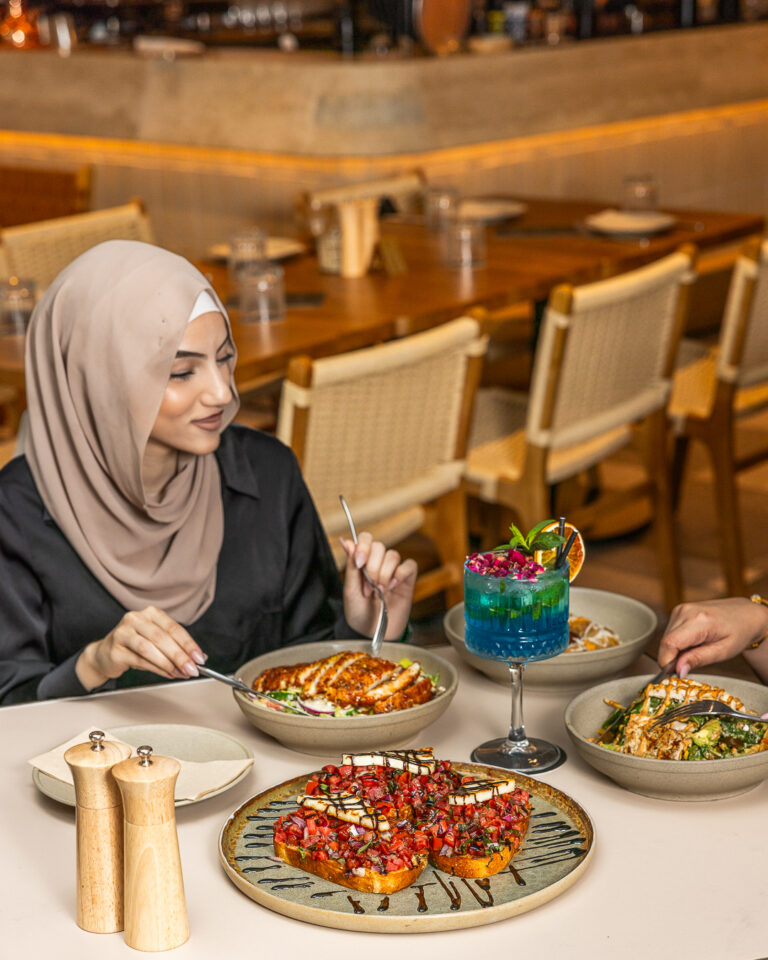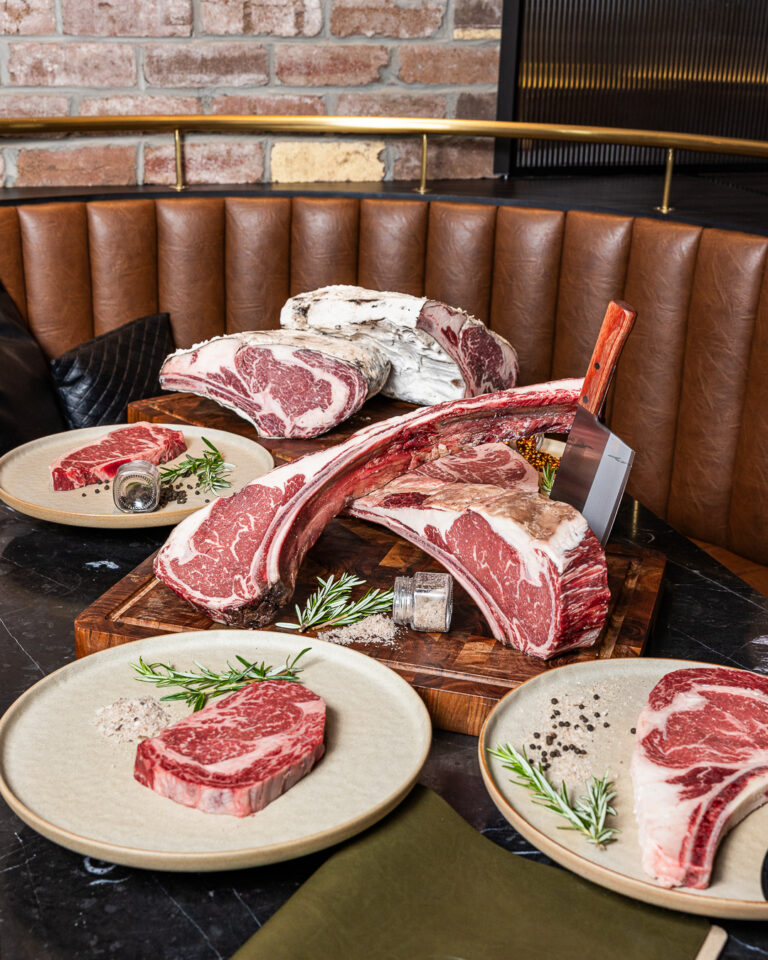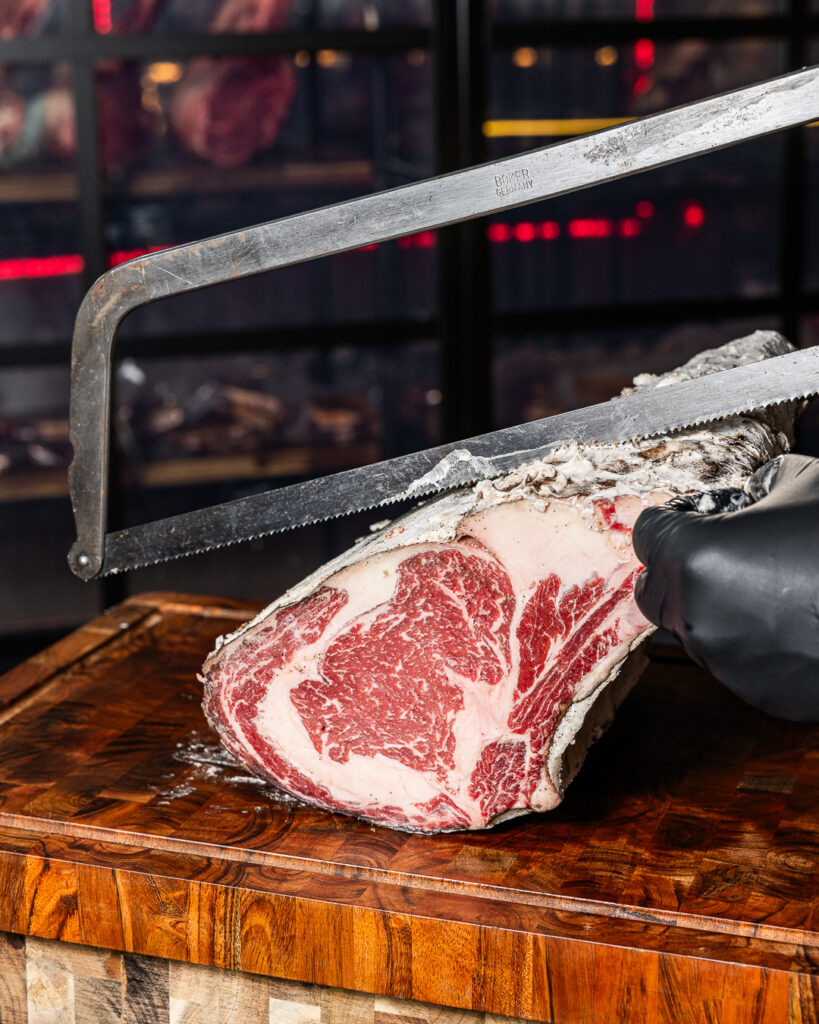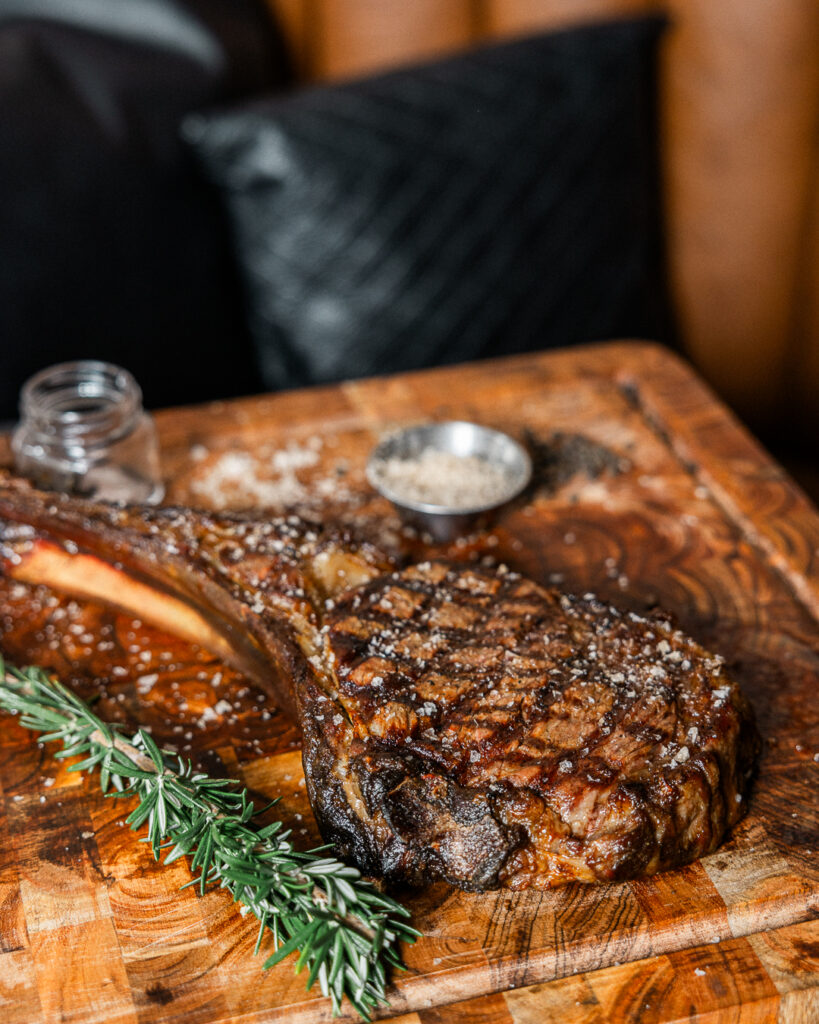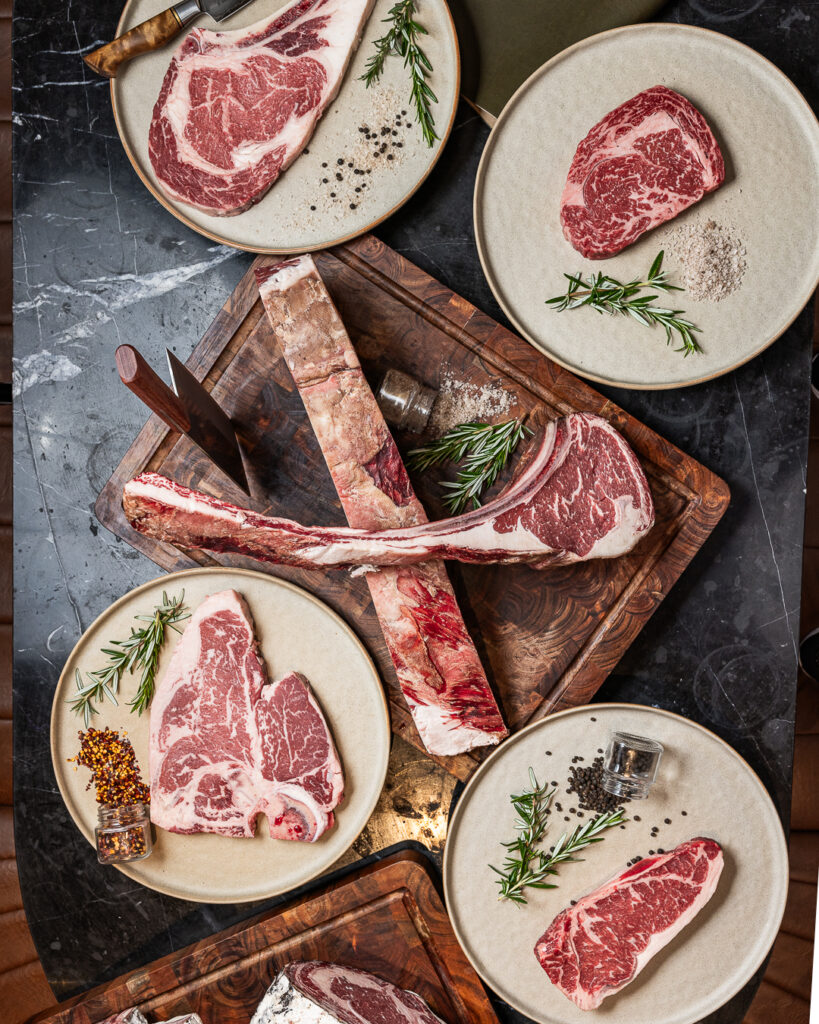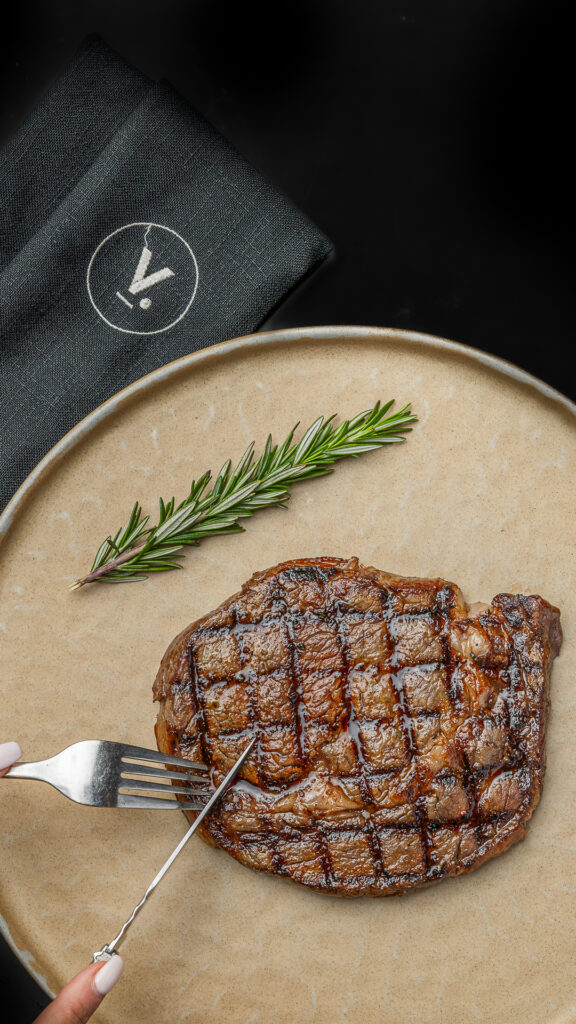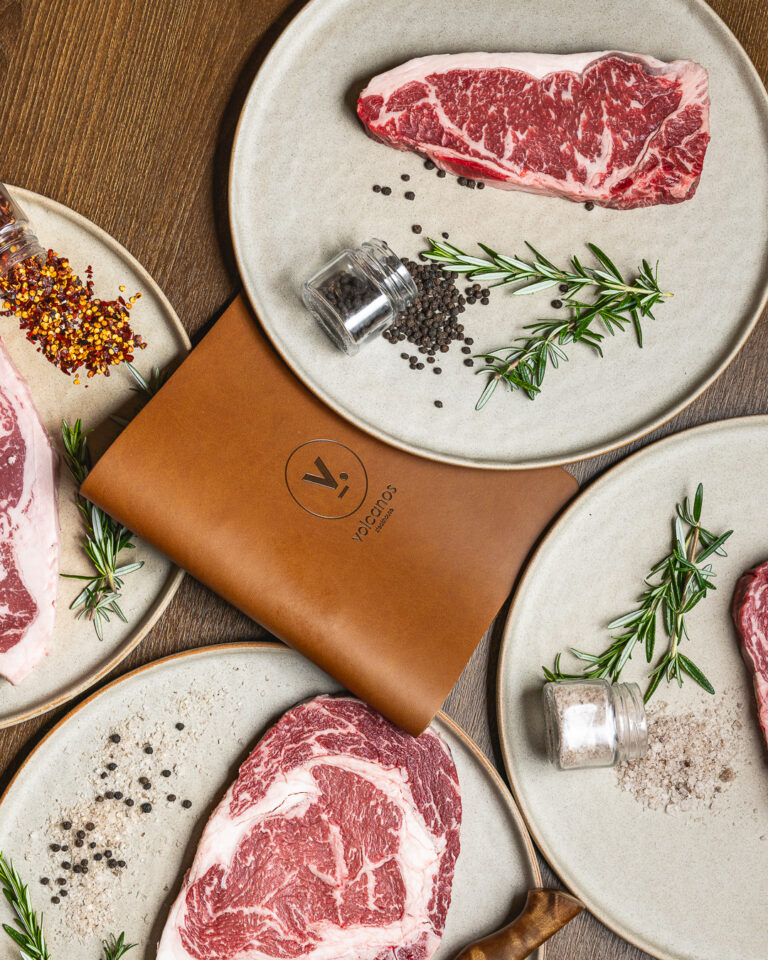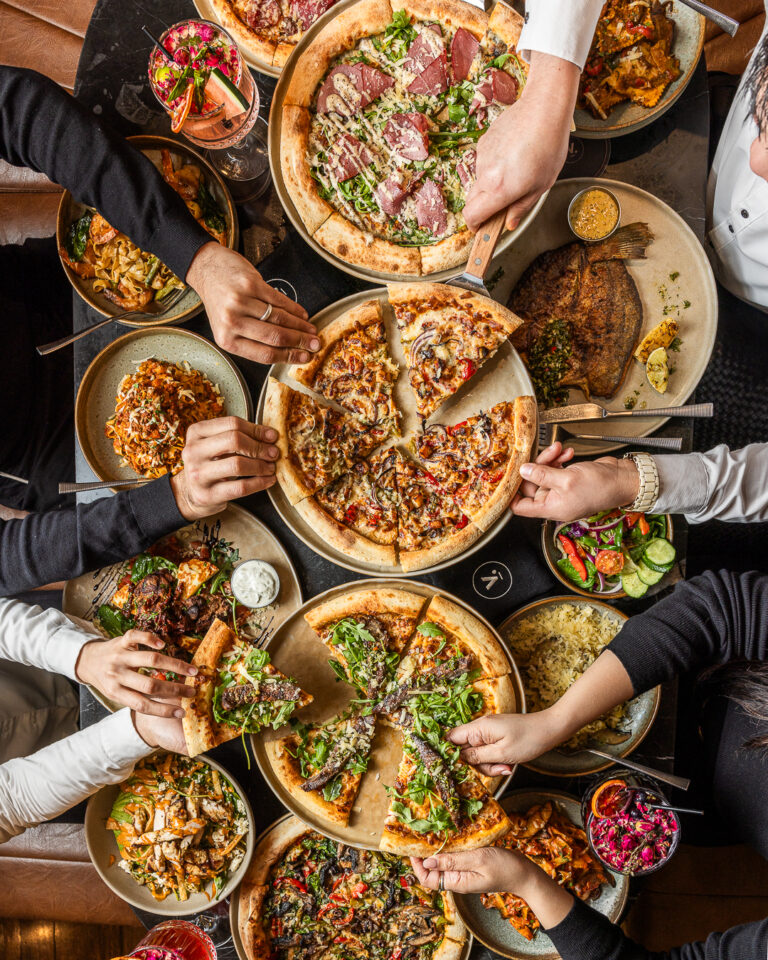That’s also where sustainable beef comes in. We don’t chase cheap, fast-grown cattle. We work with producers like Rangers Valley, who long-feed their stock, giving the beef time to develop. It takes more effort, but it lowers strain on land, improves animal health, and makes beef that performs better on the grill. These producers use clean inputs, recycle manure, and avoid shortcuts like growth promotants. The result is beef that’s both better for the planet and better on the plate.
If you’re planning a relaxed Sydney dinner or scrolling through restaurants near me to find something reliable, knowing how to read a steak menu gives you control. You’re not just picking the name of a cut. You’re choosing the eating experience. You want beef that sears clean, holds its texture, and rests without drying out.
It’s the difference between eating and enjoying. And that’s why marbling matters.
It’s also why Volcanos doesn’t cut corners. Every Halal Steakhouse should serve beef that’s traceable, properly handled, and delivered with intent. The cuts are selected for structure, aged under watch, and cooked with timing, ot just temperature. You’ll see it when the steak hits the table. You’ll feel it in the first bite. And you’ll know it’s been done right when you’re not reaching for a sauce to cover anything up.
You don’t need sauces or overcomplicated seasoning when the fat is already inside the muscle. What you need is heat, timing, and confidence in your beef. That’s how we cook at Volcanos Steakhouse, letting the marbling do the work and keeping the process clean.
Each steak is trimmed by hand. The portioning is consistent. Our chefs season lightly, using fire, not flash, to build a proper crust and keep the inside tender. That’s the standard we hold across all Volcanos locations, from lunch bookings to full Sydney dinner service.
What makes the meal different isn’t just flavour. It’s what the beef tells you on the plate. From wagyu to ribeye, marbled halal beef delivers better results, fewer mistakes, and more natural flavour per bite. It’s beef that was raised right, selected with care, and cooked with purpose.
That’s why we don’t treat marbling as an extra. It’s the baseline. And it’s one of the many reasons we’re considered a proper Halal Steakhouse and one of the best in Sydney.
You’ll taste the work in every bite. If that’s what you’re looking for, book with Volcanos today or explore the full Volcanos menu. Premium beef starts with better choices.
